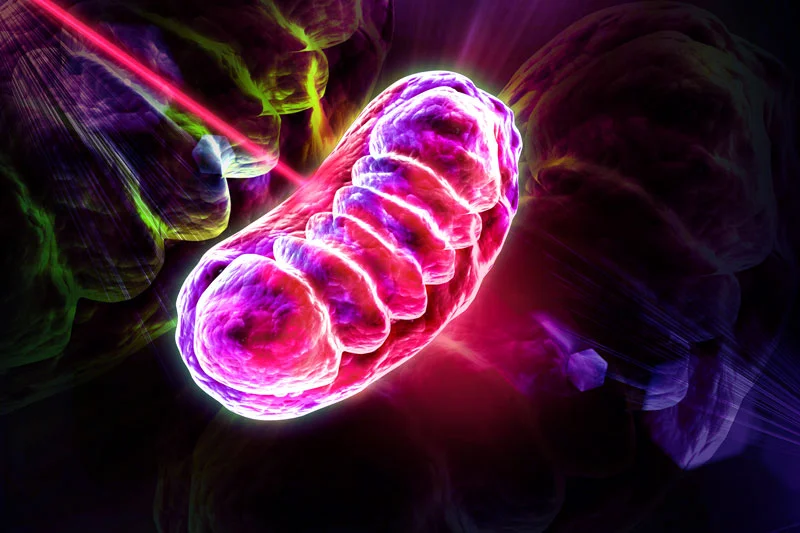Photobiomodulation Things To Know Before You Get This
Wiki Article
Some Ideas on Photobiomodulation You Need To Know
Table of ContentsRumored Buzz on PhotobiomodulationSome Known Questions About Photobiomodulation.More About PhotobiomodulationPhotobiomodulation - Truths
Laser treatment is a clinical treatment that uses focused light to promote a procedure called. During PBM, photons go into the tissue and connect with the cytochrome c complicated within mitochondria. This communication causes an organic waterfall of occasions that brings about a boost in mobile metabolism, which can in addition to accelerate the recovery procedure.There is consensus that the application of a therapeutic dose of light to impaired or dysfunctional tissue results in a cellular response mediated by mitochondrial systems. Photobiomodulation. Research studies have actually shown that these adjustments can impact discomfort and swelling, in addition to, cells repair service
Adjustments in ATP, reactive oxygen species and nitric oxide adhere to light absorption by Cc, O. These impacts are redox state and dose dependent. In hypoxic or otherwise stressed cells it has been shown often times that following, nitric oxide is released, ATP is enhanced and oxidative stress is minimized [27-31]

Photobiomodulation Things To Know Before You Buy
PBM gadgets have been gotten rid of for marketing by FDA through the Premarket Notification/510( k) procedure as adjunctive devices for the short-lived relief of pain. These clearances were based upon the presentation of clinical information to sustain such insurance claims (Photobiomodulation). In this therapy, a light resource is put near or in call with the skin, enabling the light energy (photons) to pass through tissue where it engages with chromophores situated in cells resulting in photophysical and photochemical modifications that cause changes at the molecular, cellular and cells levels of the bodySurprisingly, recent research suggests that light can boost efficiency in normal cells and cells. The possible applications of PBMT are countless and are being discovered experimentally at the standard science, pre-clinical and professional level. The current professional usages are for the alleviation of pain and swelling and the treatment of sporting activities injuries.

The therapy parameters and number of sessions required for PBMT are dependent upon location and cause. PBMT normally requires more than one treatment for optimum discomfort relief. It might take several therapies for the results to come to be apparent. records that it can take anywhere from 8 to 30 sessions for a therapy to be fully reliable, and some clients discover it needed to undertake therapy two to four times per week.
Getting My Photobiomodulation To Work
siteTherapy criteria for PBMT were initially established utilizing cells in vitro and in small animal designs. These therapy specifications usually had a low irradiance and fluence and worked well for cutaneous applications. Nonetheless when medical professionals started to make use of PBMT to treat structures that lay much deeper in the body, they utilized these specifications with negative outcomes.
We now understand that these negative research studies was because of wrong tool and treatment parameters for transcutaneous therapy of much deeper structures. Current developments in laser therapy devices and more research into the suitable does have dramatically boosted the results of PBMT. For dealing with deep tissues, the wavelength of light utilized establishes the deepness of infiltration into a cells.
It is essential that a clinician uses the appropriate wavelength of light and criteria to treat a condition. One wavelength and one collection of treatment parameters will certainly not be efficient for all conditions. Adverse side impacts have not been reported from the use of PBMT.
8 Easy Facts About Photobiomodulation Shown
In the first experiment, Dr. Endre Mester, used shaved rats and observing exactly how the laser impacted their capability to grow hair contrasted to the team that was not getting LLLT. He link discovered that the team of computer mice getting LLLT were able to expand their hair back faster than the team of mice that didn't get LLLT (Hoon C, et alia; 2012).This therapy is termed this means to set apart the distinction in between the lasers some careers utilize to reduce (eg. Low-level light treatment is painless, non-invasive treatment.
LLLT has a biphasic feedback, meaning that reduced dosages are typically seen to be extra useful than higher dosages. That being stated, dosages greater or reduced than the optimal dose does not impact (Hoon C, et alia; 2012). Because of this, it can be difficult to have researches on LLLT with a lot of criteria.
Some business integrated the 2 (LED and laser) to provide an extra all-around treatment since lasers can permeate much deeper than LED and infrared light (Norman Doidge, The Mind's Way of Healing, 2015). During therapy, the area that is see this being treated is exposed to LED light from a Biography, Flex Laser, which goes to 660 nm wavelength, adhered to by infrared light at 830-840 nm wavelength.
Report this wiki page